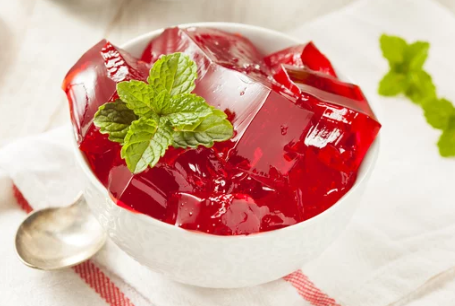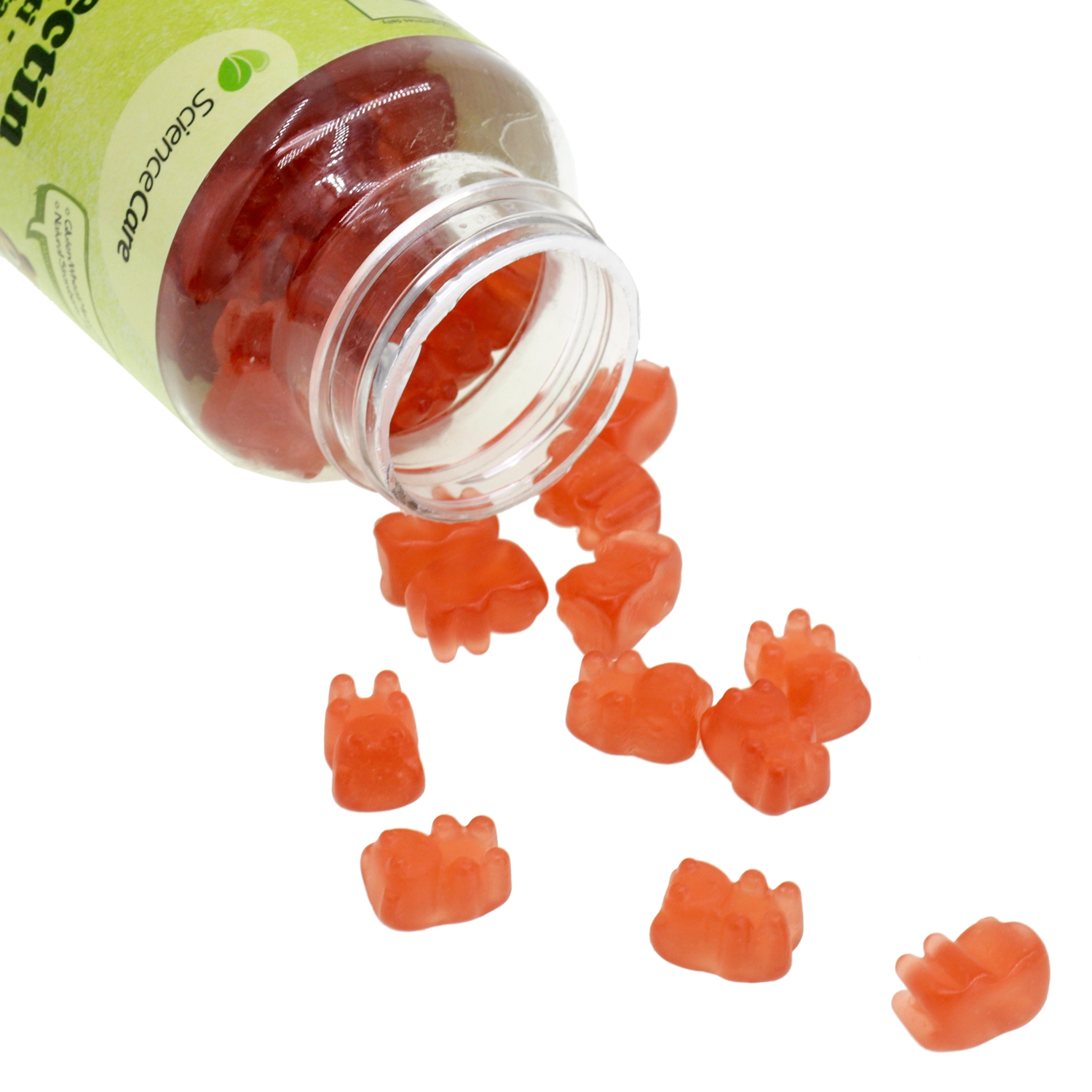Gelatin and pectin are two common ingredients used to make foods and supplements. They make a firm or chewy texture for candies, desserts, and even gummy vitamins. But they are different in many aspects. A clear understanding of their differences is highly related to your production needs.
- Discover the eaning of gelatin
- Find the definition of pectin
- Five key differences between them
- Five frequently asked questions
What is Gelatin?

Gelatin is a protein that comes from collagen. Collagen is a natural substance found in the skin, bones, and connective tissues of animals such as cows, pigs, or fish. To get gelatin, people boil these animal parts in water to extract the collagen. Then, it is dried and turned into a powder or gelatin sheet form. Gelatin is ideal for recipes that require a soft, springy texture. It also melts easily in the mouth. It could make products have a pleasant and smooth feel when eaten.
Gelatin is widely used in food production. It offers gummies and jelly with a chewy texture, and makes marshmallows stay soft. In the supplement industry, gelatin is often used to make the shells of capsules and softgels. Because it forms a smooth and easy-to-swallow coating.
What is Pectin?

Pectin is a type of soluble fiber that comes from plants, especially fruits such as apples and plums. In manufacturing, pectin is usually extracted from fruit peels or pulp. Then they are processed into a fine powder that can be easily added to recipes.
Pectin is most used in making jams and jellies in the food industry. In the supplement industry, pectin can be used as a gelling agent for plant-based gummy vitamins. It is also a source of dietary fiber in certain products.
The texture of pectin gels is different from gelatin. It produces a firmer, sometimes more brittle taste. It does not melt in the mouth as easily. This makes pectin products keep their shape in warmer conditions.
Five Key Differences Between Gelatin and Pectin
Source
The first key difference is the source. As you know, gelatin is derived from animals. So it is not suitable for vegetarians or vegans, and some consumers may avoid it for religious or personal reasons. Pectin, on the other hand, is plant-based. It comes from fruits, suitable for vegans, vegetarians, and those following halal or kosher diets. This makes it a preferred choice in plant-based and allergen-free product lines.
Texture
Gelatin tastes soft, chewy, and elastic. It quickly melts in the mouth. This is why it is popular in gummies, marshmallows, and creamy desserts.
Pectin forms a firmer gel with a clean break. It makes candies less stretchy and more jam-like. This makes it ideal for products like fruit jellies, jams, and gummies that require a sharper texture.
Cost
Gelatin is generally cheaper to buy and use in production. This is because
Lower raw material cost. Gelatin is easily available from animals, but pectin requires a more complex extraction process. This makes the final powdered form more costly.
Production process and equipment. Gelatin gummies are cooked at lower temperatures, usually 60–80°C, which uses less energy. By comparison, pectin gummies need higher cooking temperatures, sometimes above 100°C. This poses higher requirements to the manufacturing equipment.
Because of these factors, pectin products are often more expensive, even when the base ingredient prices are similar.
Gelling Method
Gelatin gels form when the protein dissolves in hot water and then cools down. As it cools, the gelatin molecules link together, trapping water to create a smooth and elastic gel. This gel melts when reheated and sets again when cooled.
Pectin works differently. It requires both sugar and acid or calcium ions to create a gel. During the gelling process, the mixture is heated at first. Then, it cools to get the gel structure in place. Once set, pectin gels do not melt at room temperature. It makes them more stable than gelatin in warm conditions.
Nutritional Value
Gelatin contains amino acids like glycine, proline, and hydroxyproline. They support skin, joint, and connective tissue health. In gummies or candies, this protein content usually plays a minor role in nutrition, but it can be used as a marketing point for beauty gummies or joint-support supplements. The actual health benefit depends on the amount of gelatin used and the overall formulation.
As fiber content, pectin supports digestive health, helps regulate bowel movements, and lowers cholesterol levels. In candy or gummy production, it is generally low. However, for vegan gummies or digestive health supplements, pectin can be a selling point. It is especially useful when combined with probiotics or other gut-friendly ingredients.
You may check the following chart to see their differences more clearly.
| Feature | Gelatin | Pectin |
| Source | From animals | From plants and fruits |
| Dietary | Common, but not for vegans. | Vegan and vegetarian friendly. Halal and kosher. |
| Gelling | Sets when cooled and melts with heat. | Needs sugar and acid or calcium to set. It does not melt at body temperature. |
| Texture | Soft, chewy, and elastic. | less stretchy and jam-like. |
| Stability | Stable at room temperature. But it softens in warm heat. | It keeps shape in warm weather. |
| Nutrition | Protein involved. | Soluble fiber involved. |
| Cost | Lower | High |
Six Frequently Asked Questions
Is Pectin the Same As Gelatin?
No, they are not the same. Gelatin comes from animals, while pectin is derived from plants. They also give different textures. Pectin is firm like jam, and gelatin is soft and bouncy.
Can You Use Gelatin Instead of Pectin?
Sometimes you can substitute gelatin for pectin, but the texture will not be the same. There is no specific substitue ratio, so you may need to adjust the quantities many times to get your desired result.
What are Gelatin and Pectin Used for in Jam?
Pectin in jam helps it thicken and hold its shape. Without pectin, jam would be runnier and not set well. On the other hand, gelatin thickens the jam as it cools, but it will soften or melt if the jam is heated again. This makes it more common in quick and refrigerated recipes.
Do Gelatin and Pectin Have the Same Taste?
Gelatin and pectin do not have strong tastes on their own. Gelatin is almost flavorless. But it has a very mild animal note if not highly refined. Pectin is also neutral in taste, though some people notice a faint fruity or plant-like note.
Is Gelatin Made from Bones?
Yes. Gelatin is often made from animal bones, skin, and connective tissues. These parts are boiled to release collagen. It is then processed into gelatin powder or sheets used in food and supplements.
Which is Healthier, Pectin or Gelatin?
In most foods like gummies, both pectin and gelatin are used in small amounts. They mainly affect texture and structure, not nutrition. For real health benefits, higher-dose supplements are needed.
The End
Gelatin and pectin are both popular ingredients to make gummies, jams, and other gelled foods. You can select the most suitable one based on your production needs. If you need gummy making machines, we are your good partner. We offer different gummy making machine and production lines. Tell us your requirements and get good-quality machines for your business.